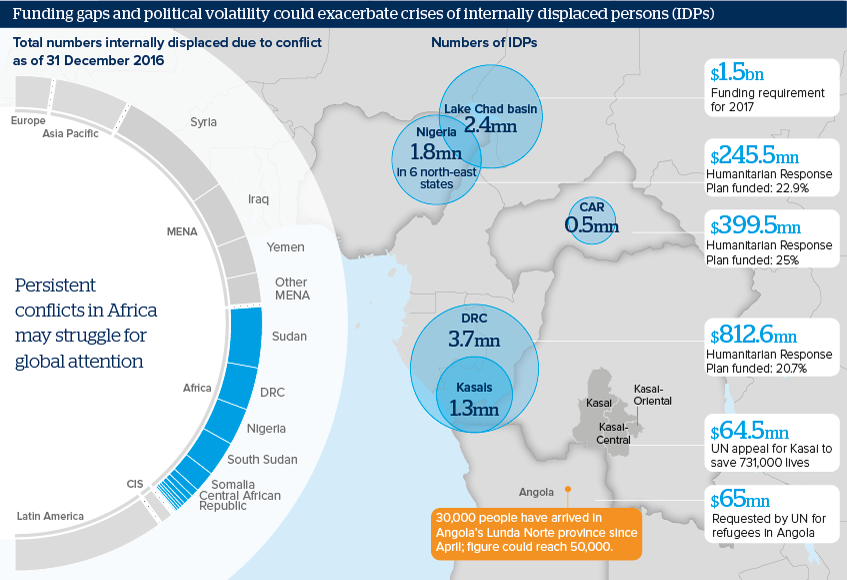African displacement will grow as instability persists
Sub-Saharan Africa was home to the largest number of conflict-related IDPs globally in 2016
Source: Internal Displacement Monitoring Centre (IDMC)/Norwegian Refugee Council; OCHA; UNHCR
Outlook
Political volatility and violence in the Democratic Republic of the Congo (DRC) contributed to the largest increase in the number of conflict-related IDPs in 2016, according to a report by the Internal Displacement Monitoring Centre (IDMC) and the Norwegian Refugee Council (NRC).
Growing unrest and IDPs in the Kasais is partly attributable to opposition to President Joseph Kabila’s attempts to stay in power, with ongoing fears that Kabila may delay elections scheduled for later this year
With foreign aid budgets under scrutiny in the United Kingdom and United States, new and growing IDP crises could struggle to receive the necessary funding not only to feed and house displaced populations, but also to ensure their safe long-term repatriation and resettlement.
Impacts
- International focus will remain on refugee flows and repatriation, rather than new IDP crises.
- Modest economic growth across sub-Saharan Africa will hinder regional governments’ ability and willingness to deal with new IDP flows.
- Regional governments will use the care and management of IDP populations as bargaining chips with Western partners.
- Relaxed US military rules of engagement in Somalia could provoke opposition amid potential human rights abuses and new IDP crises.
See also
- African politics and security to end-2017 - Jun 30, 2017
- Gabon's president will overcome internal unrest - Jun 28, 2017
- Congo's Kabila will use Kasai violence to linger - May 16, 2017
- More graphic analysis
